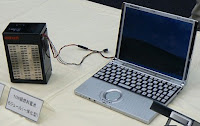Tirumala by Walk
 We 3 i.e. Bhaktavatsalam, Swaminathan & Rajmohan decided to climb up the hill on April 13th at 12.50 A.m and reached up the hill at 5.30 A.m , these are the photos we took by mobile camera while climbing up the hill, the last snap is next to the chariot we saw an elephant and beautiful rangoli.
We 3 i.e. Bhaktavatsalam, Swaminathan & Rajmohan decided to climb up the hill on April 13th at 12.50 A.m and reached up the hill at 5.30 A.m , these are the photos we took by mobile camera while climbing up the hill, the last snap is next to the chariot we saw an elephant and beautiful rangoli.
Climb the hills to Tirumala to fulfil a vow!
For those of you who would like to climb the hills to Tirumala to fulfil a vow, there are two well-laid stone footpaths leading to Tirumala. These paths are called "Sopanamargas" (stairways).

The more ancient of the two Sopanamargas starts from Alipiri at the foot of the hills, is about 11-km in length, and is the commonly used route. The other Sopanamargas is from Chandragiri, though only about 6-km in length, it's a difficult route and is mainly used by the local people and traders. TTD also provides several facilities for the pilgrims who walk up the hills to Tirumala.

FACILITIES FOR PILGRIMS TTD or Tirumala Tirupati Devasthanam manages the affairs of the temple, the well-being of the pilgrims, the upkeep of the environs in and around the Tirumala hills and sponsors several undertakings that are religious, charitable, social and educational in nature.

The TTD provides ample conveyance and halting facilities to thousands of pilgrims. Many pilgrims climb the hill by walk to fulfil the vow they have taken. Facilities like shelters, drinking waters, toilets, canteens, medical facilities etc are provided for a quick and relaxing walk uphill.





























